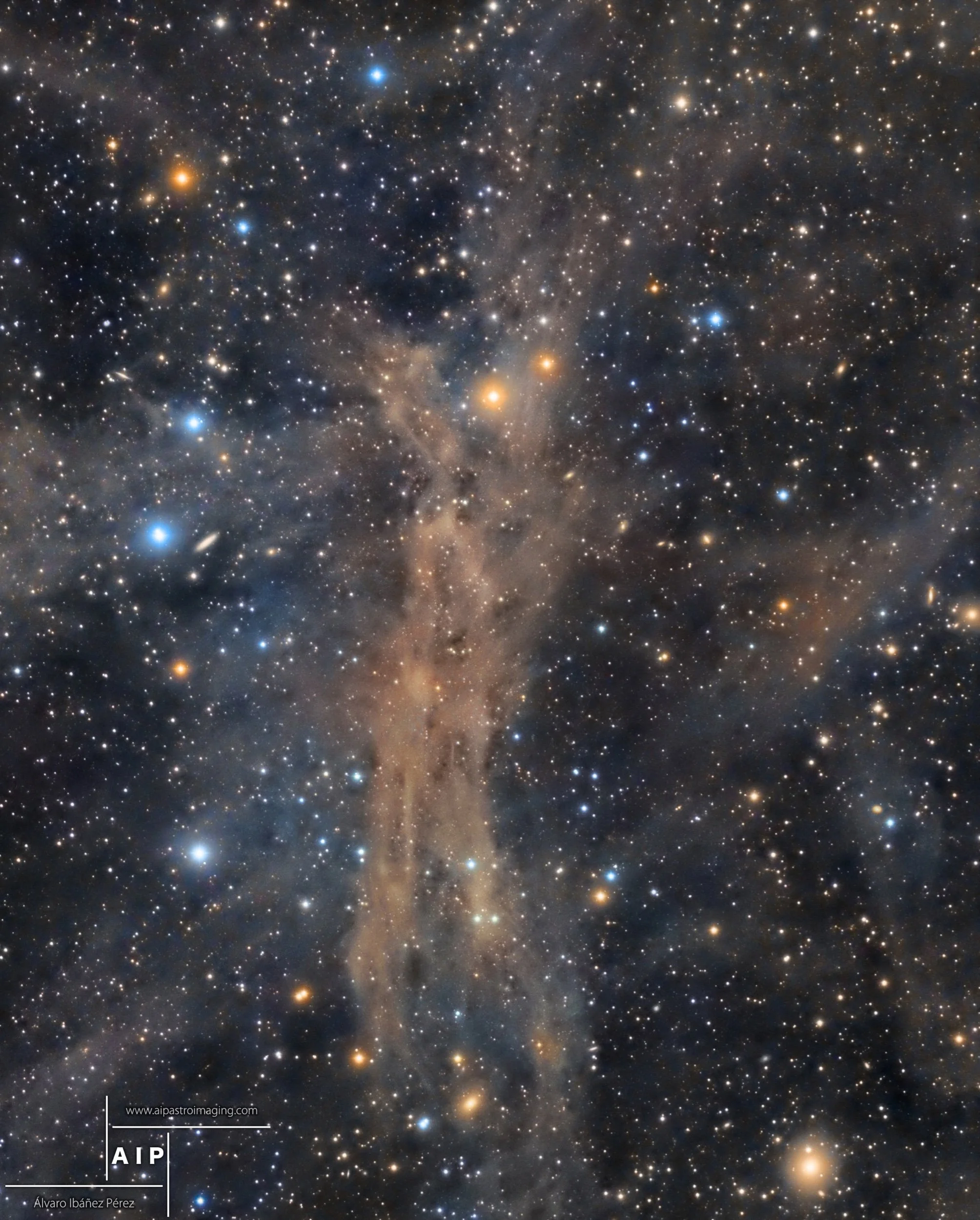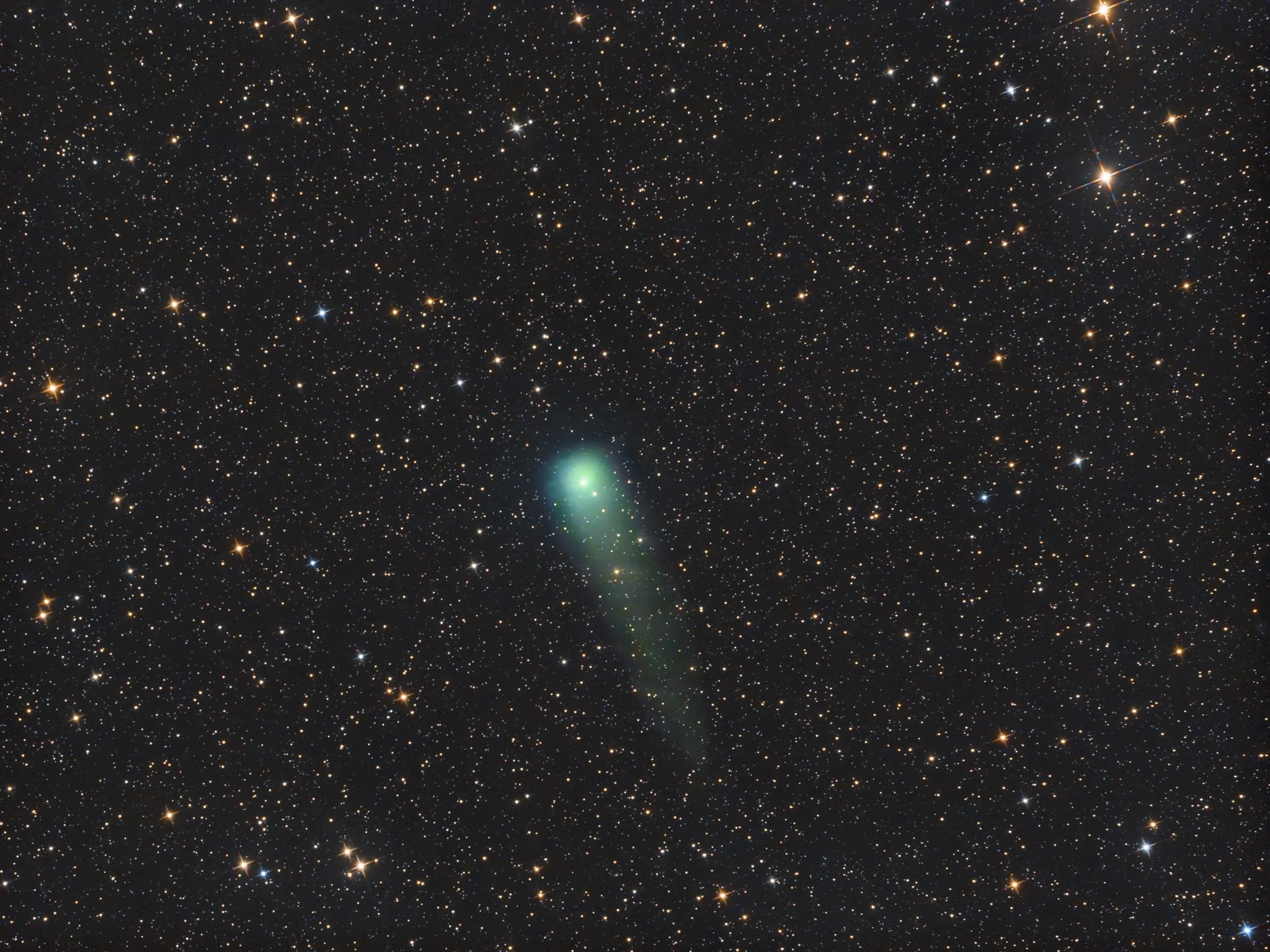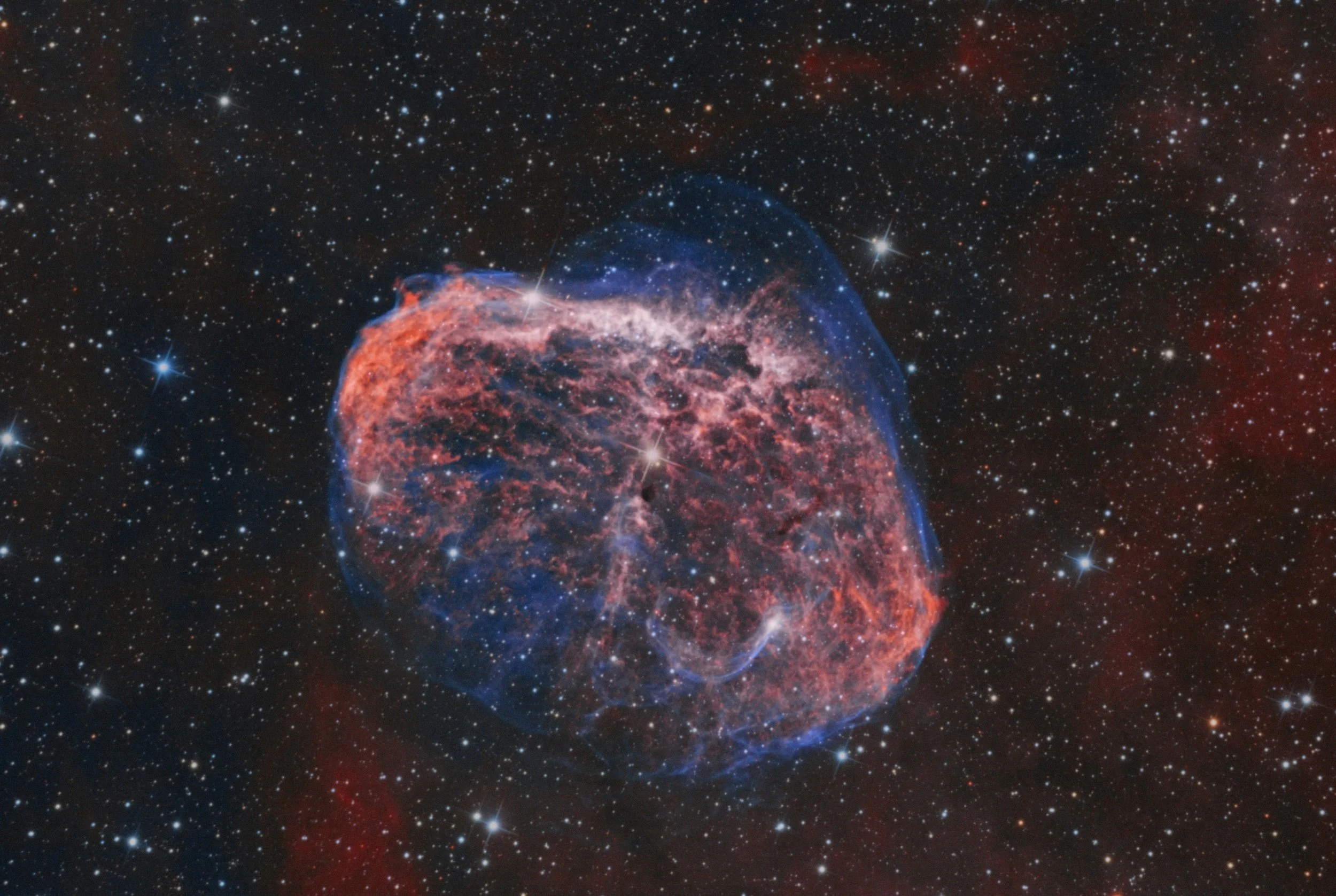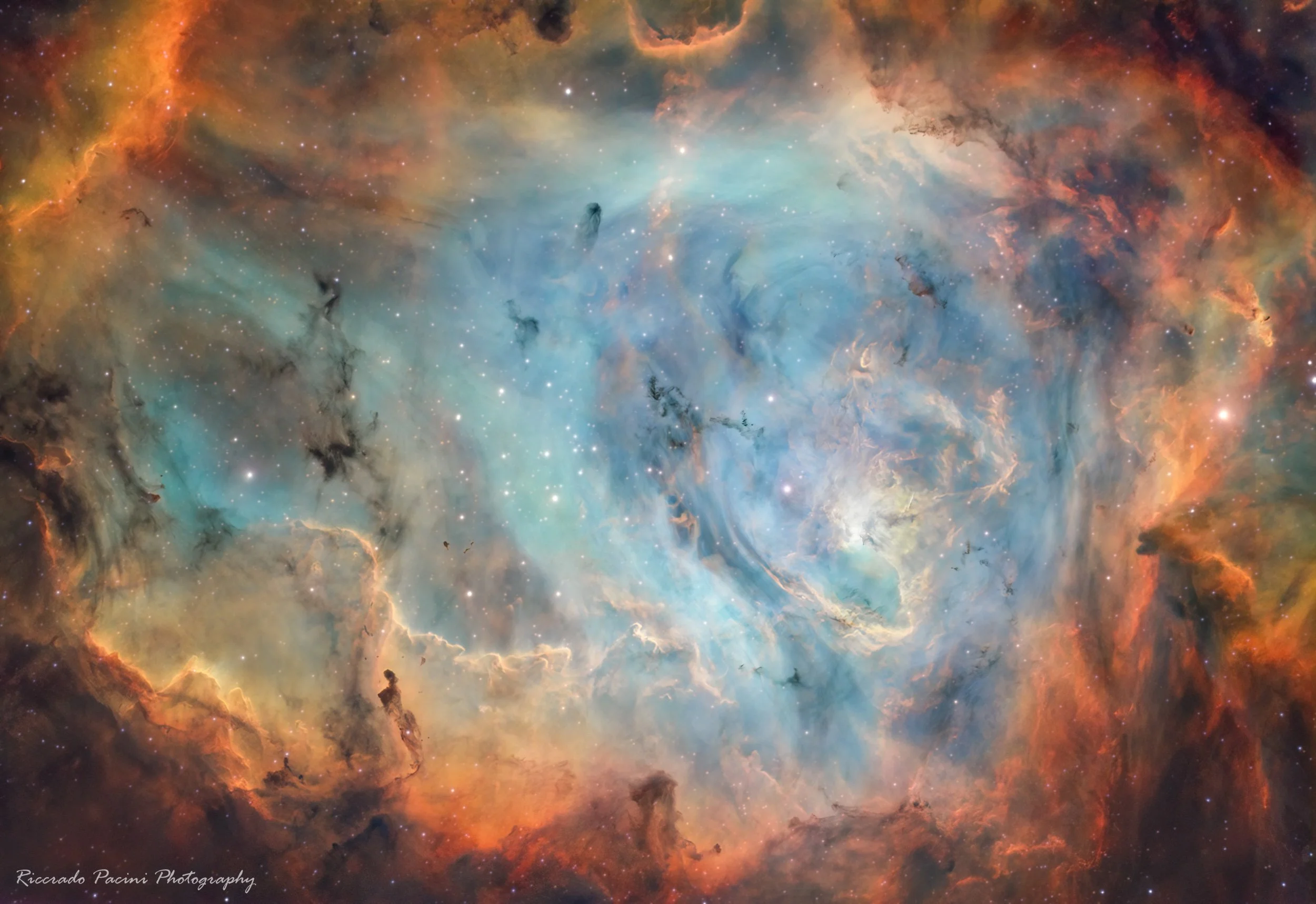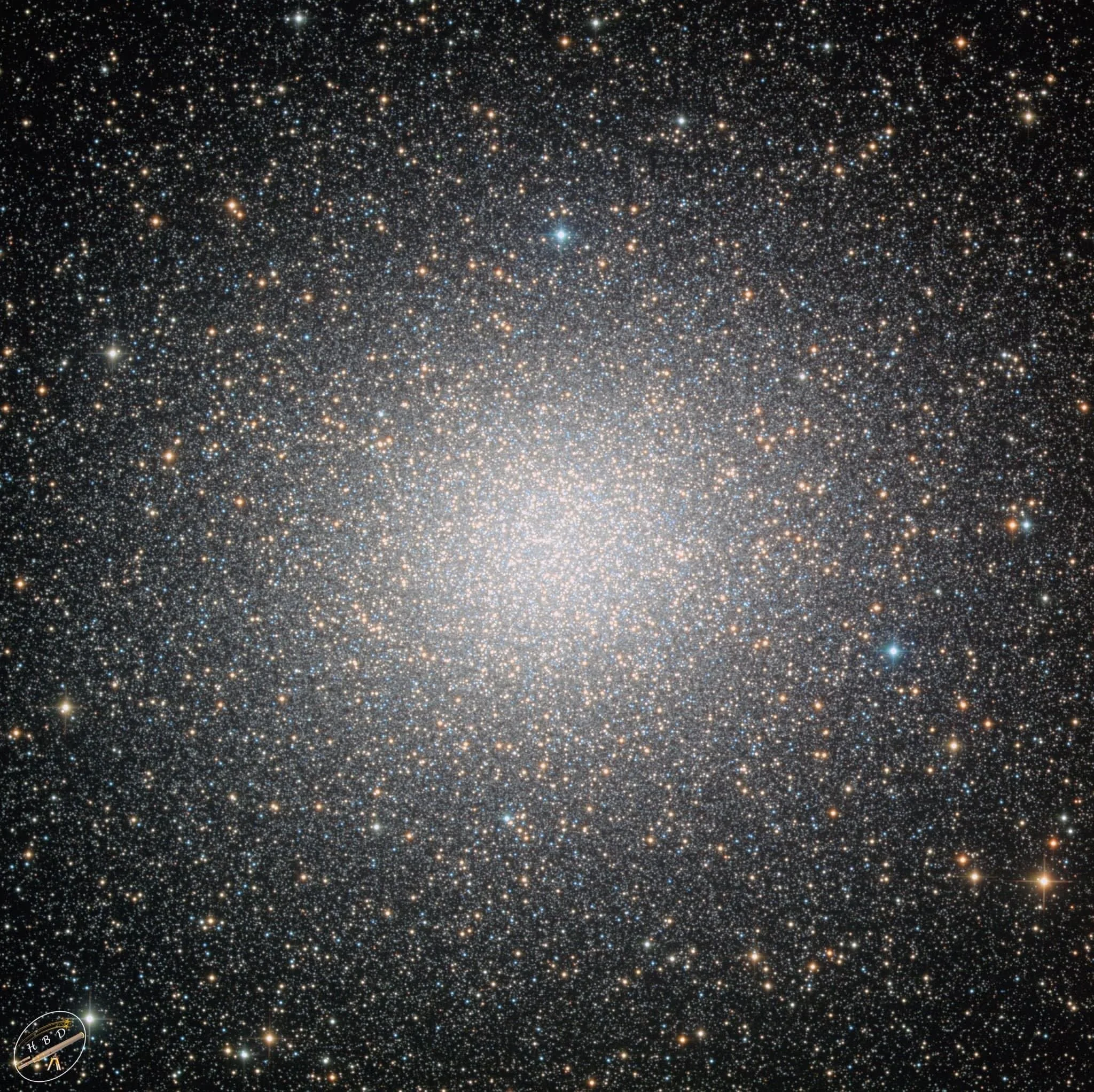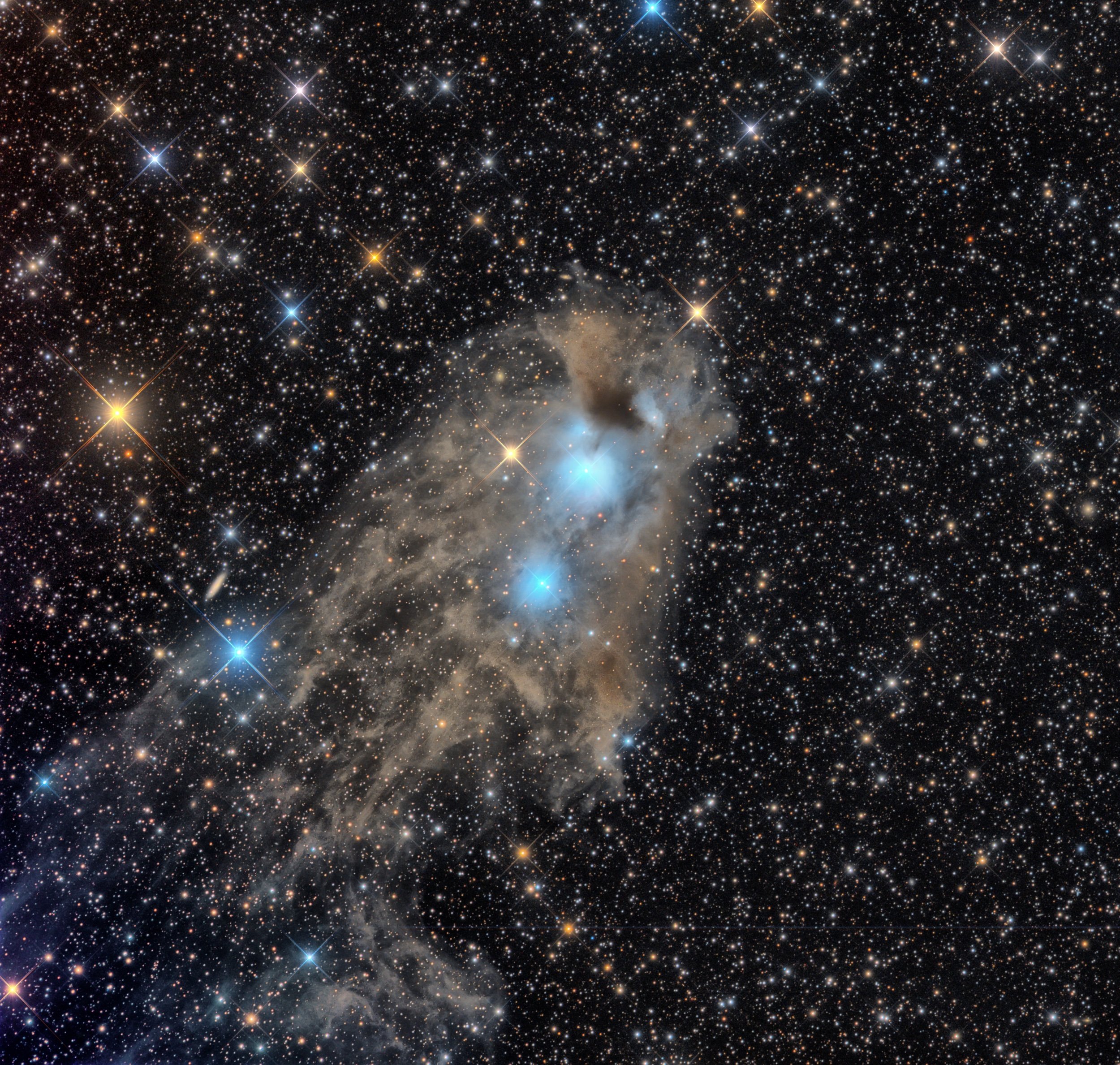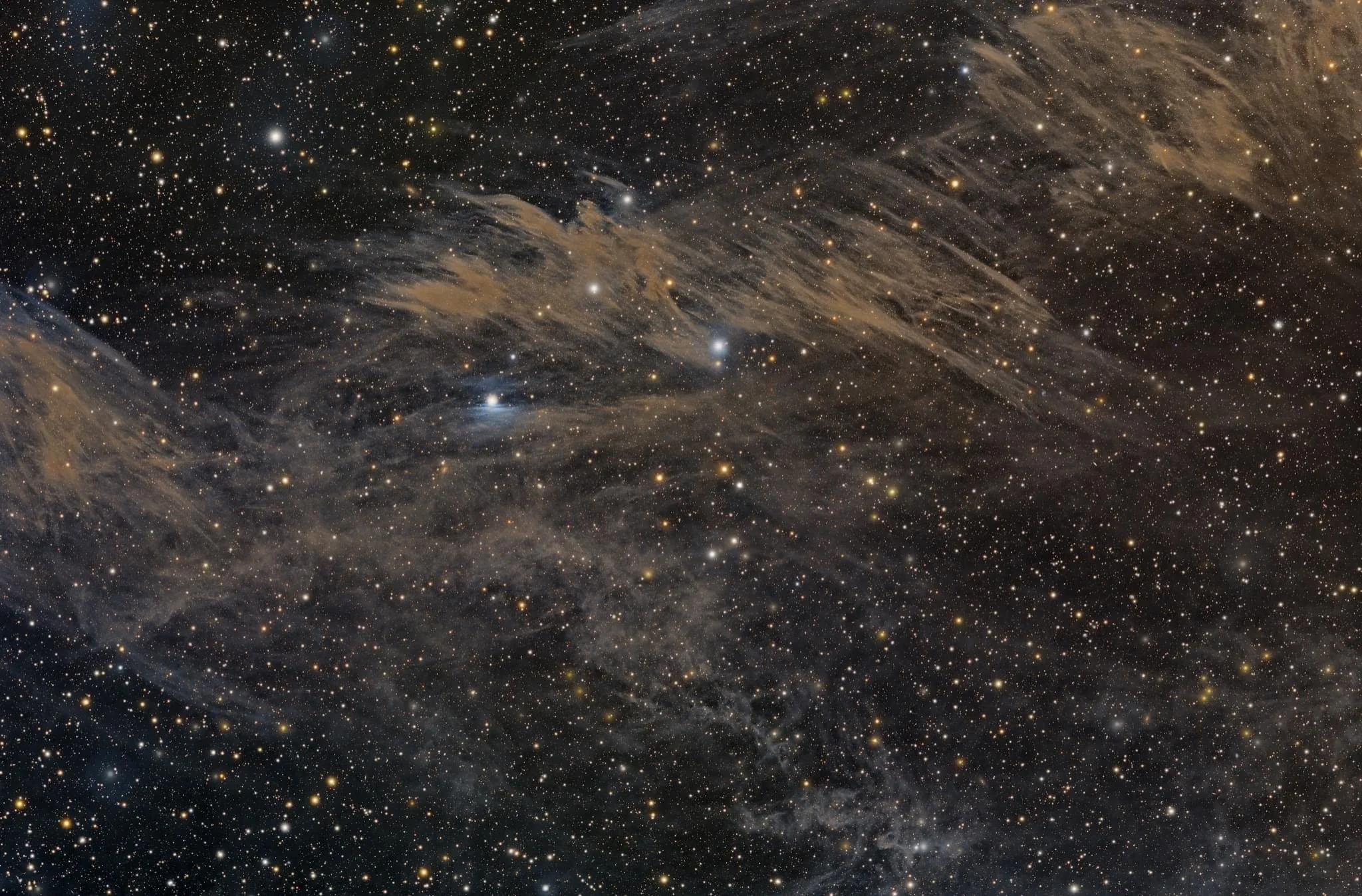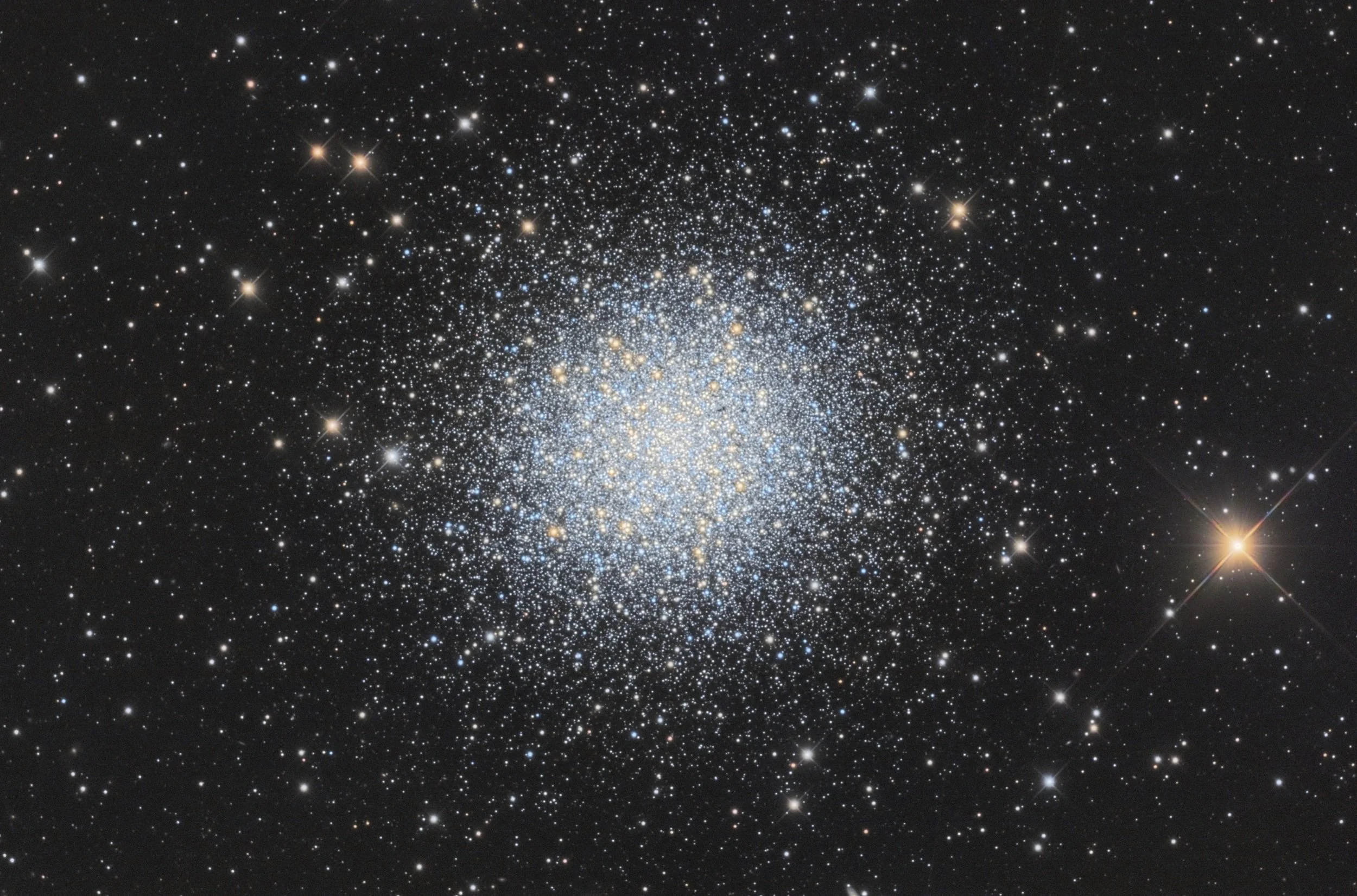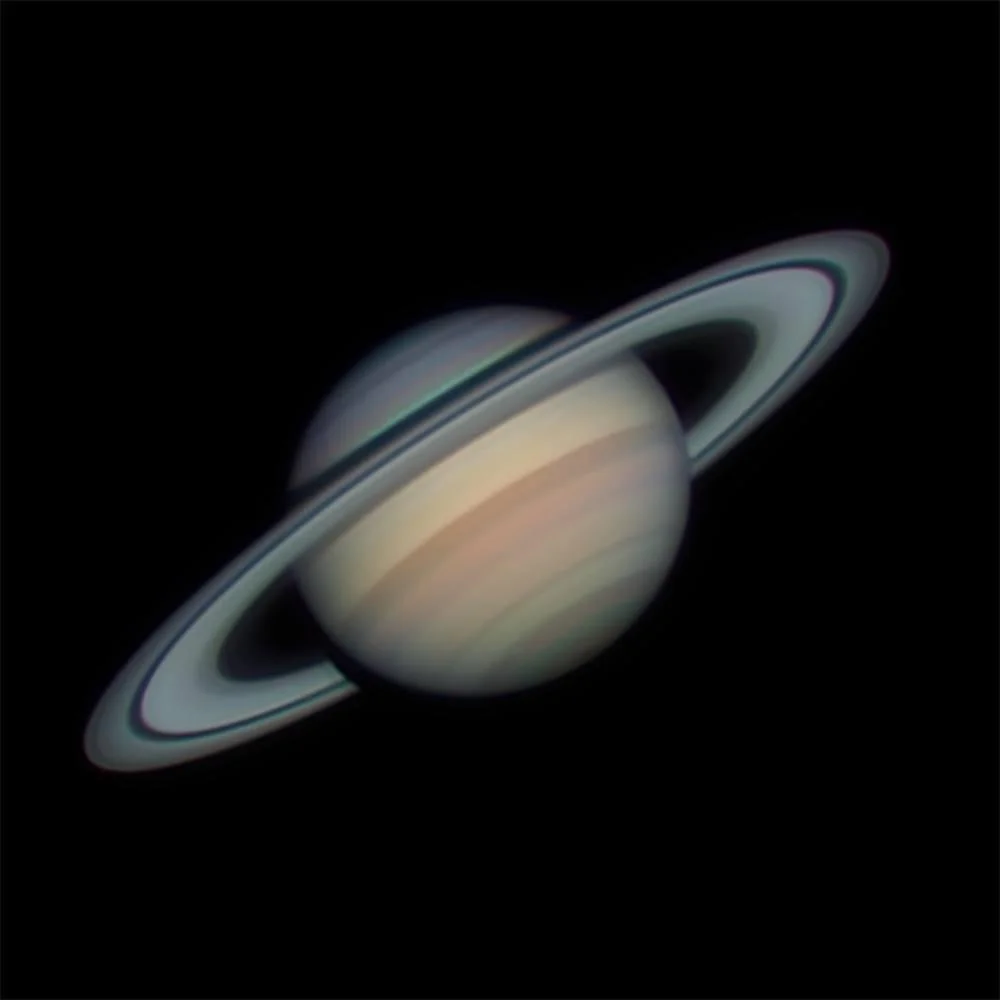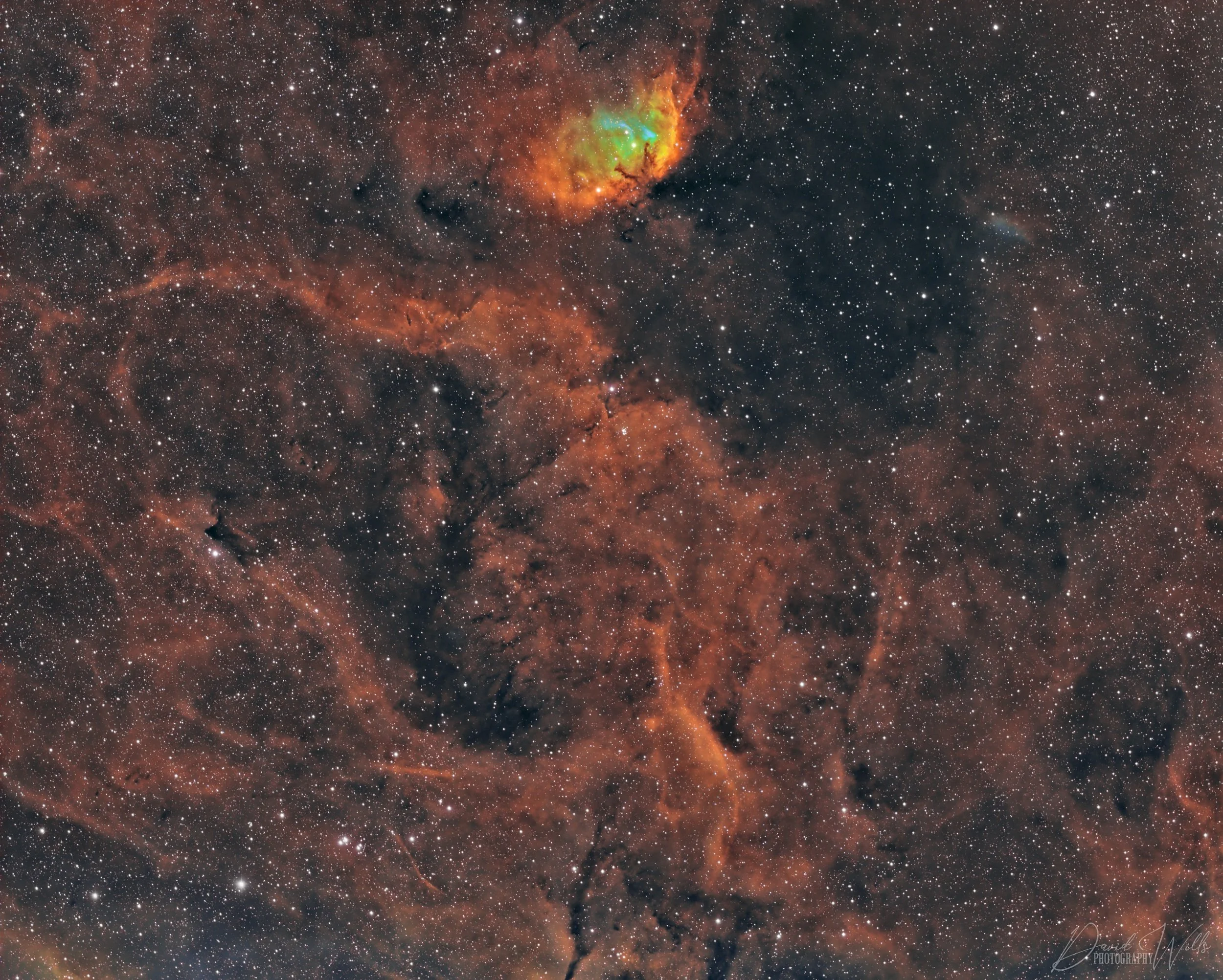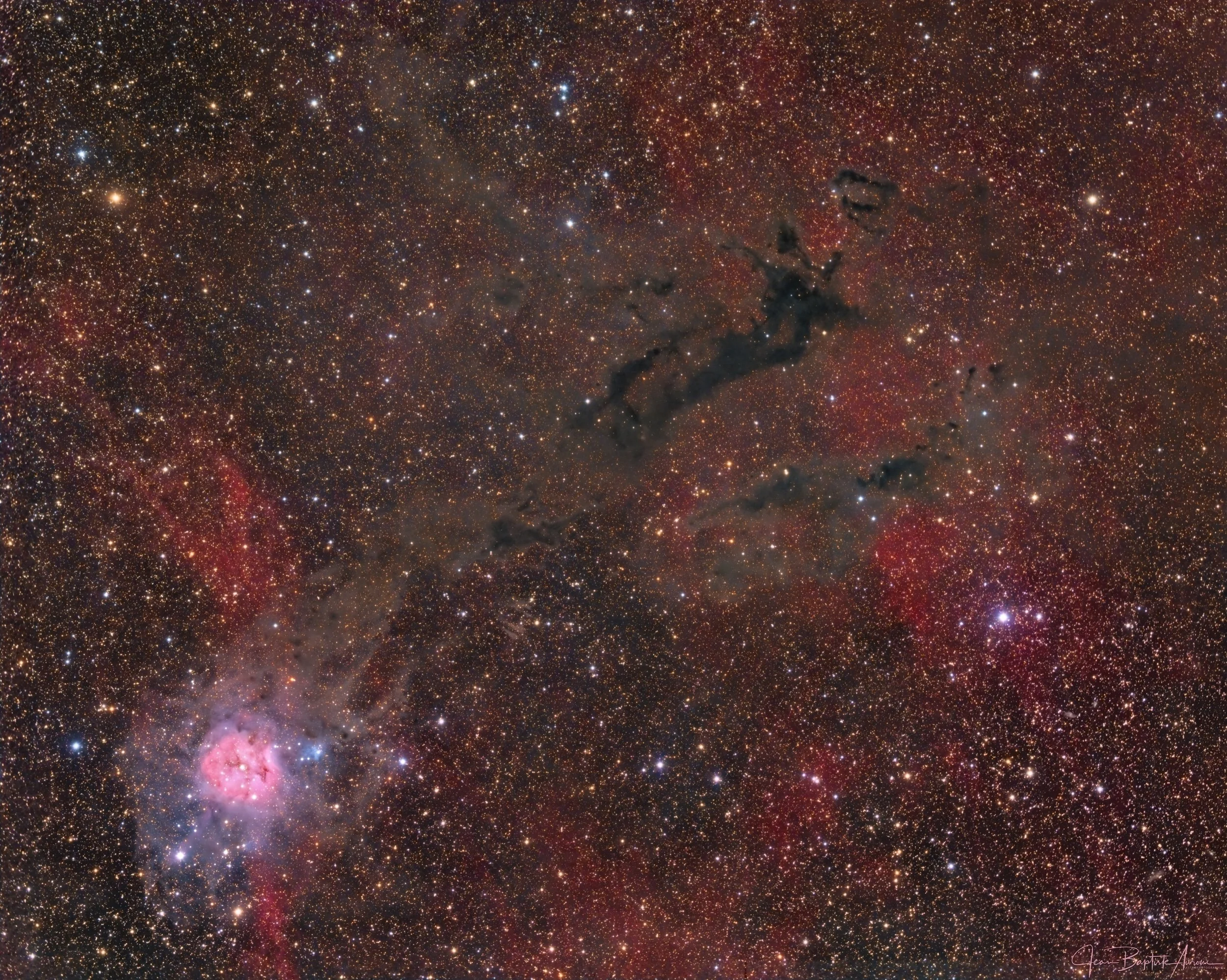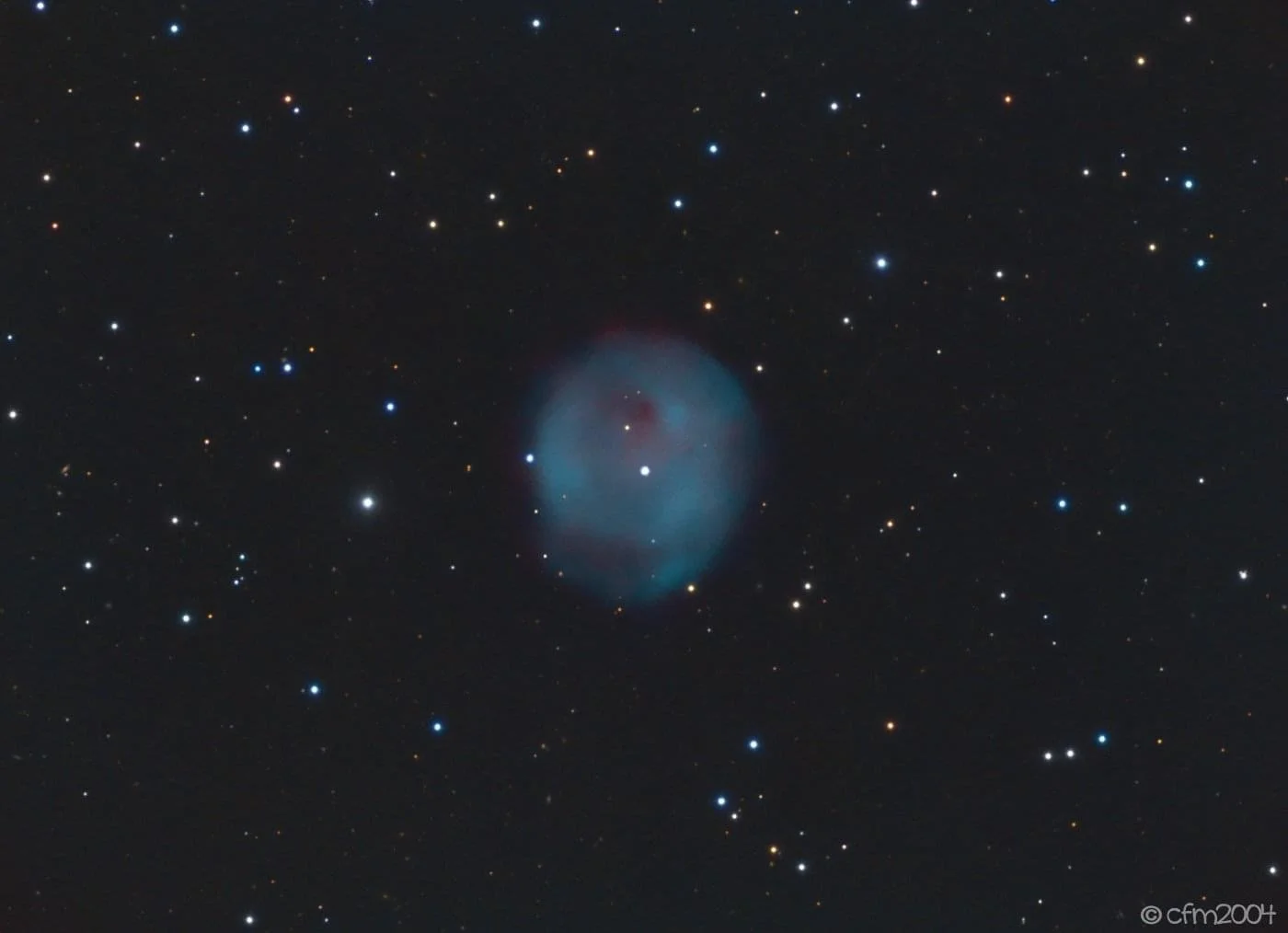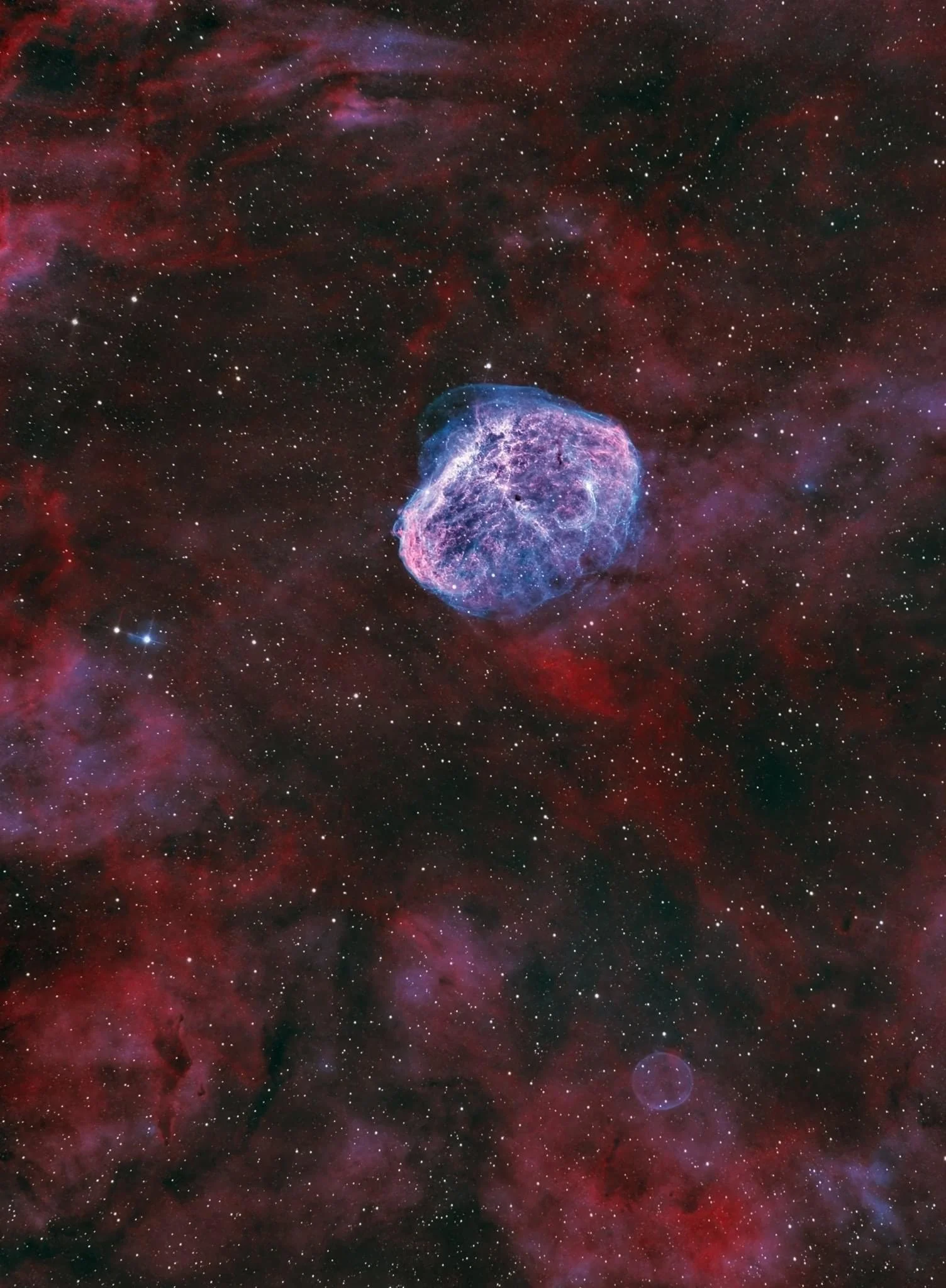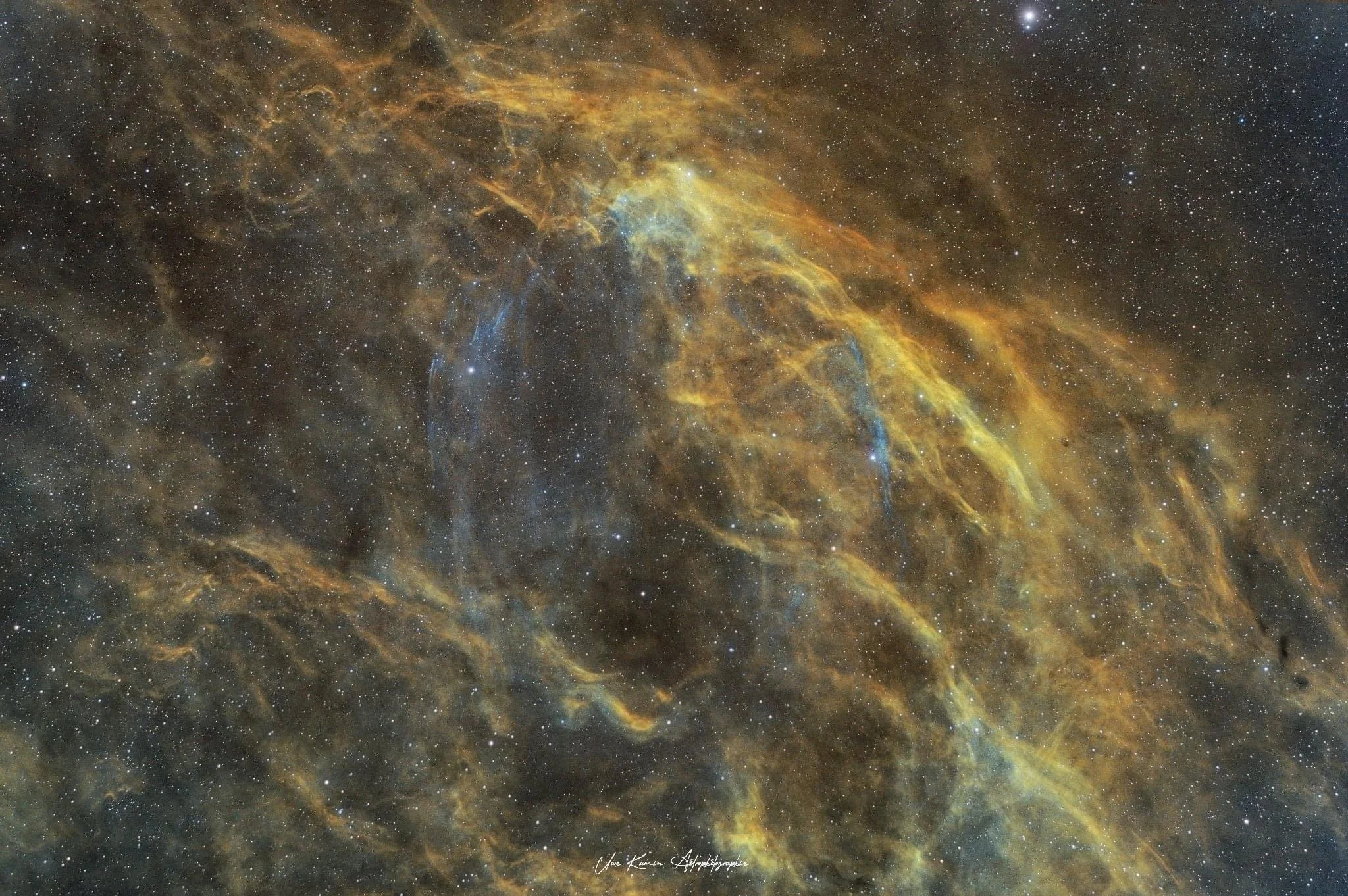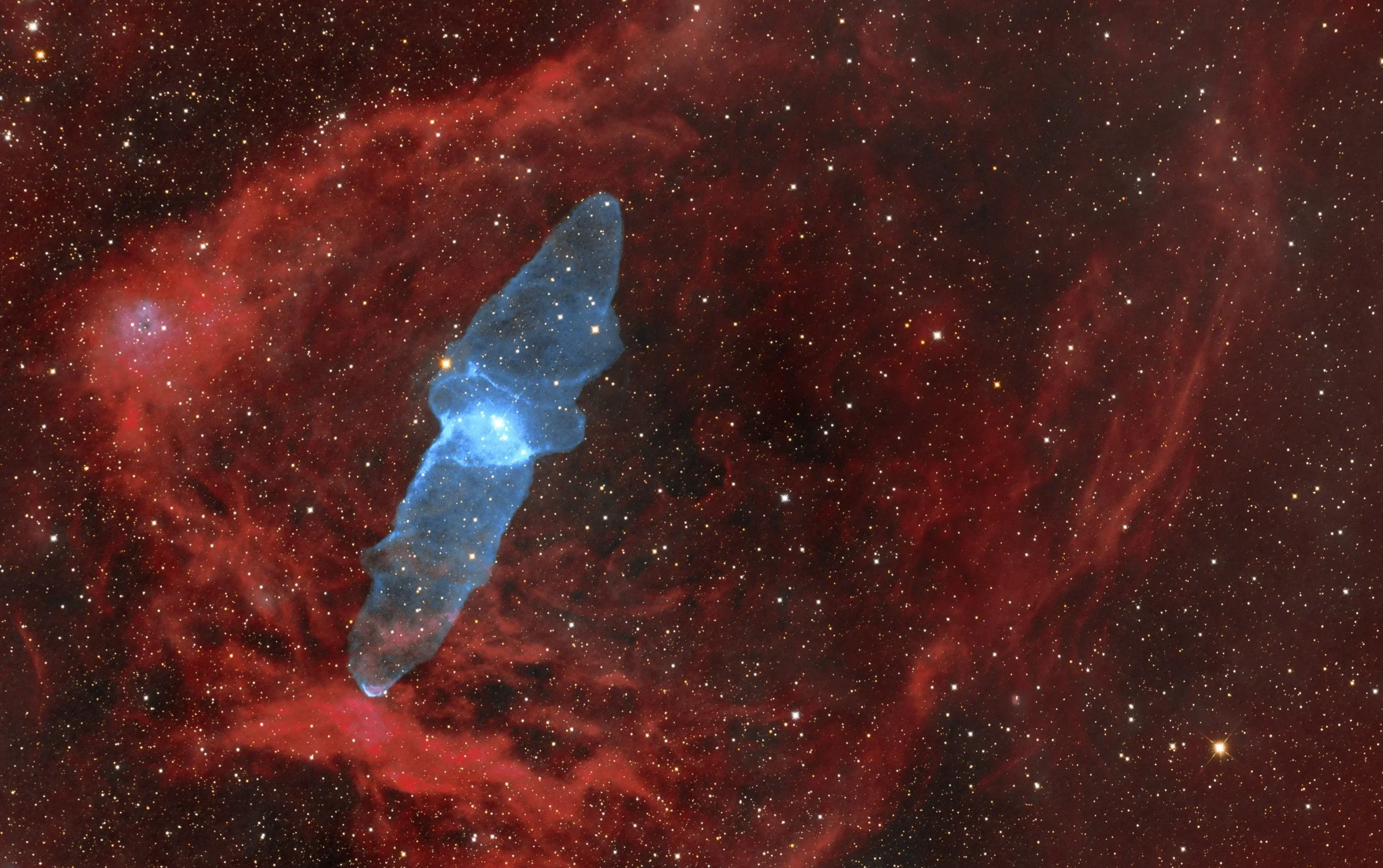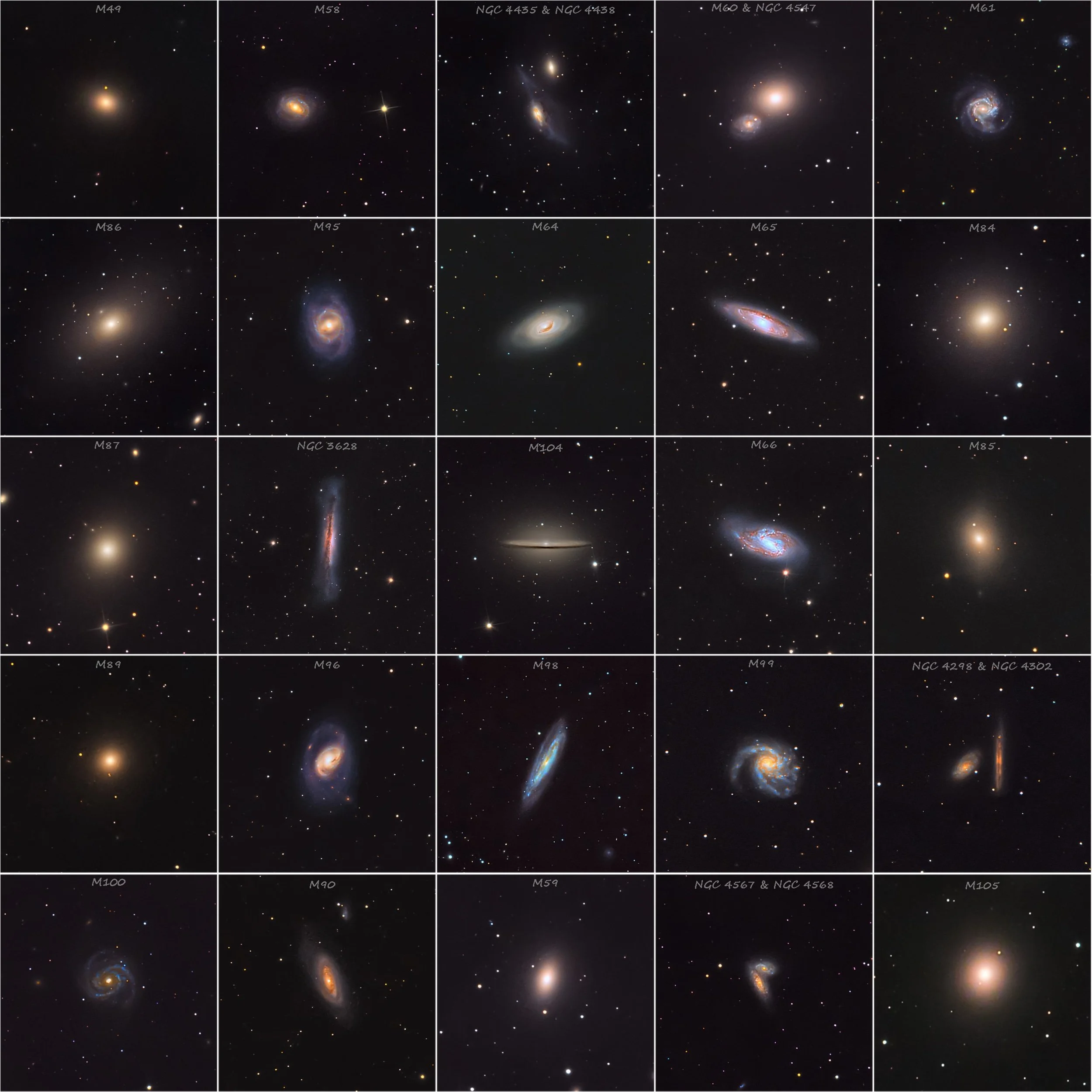
AAPOD2 Image Archives
Mandel Wilson 2 - Angel Nebula
Image Description and Details : Telescope: Takahashi FSQ106EDX f/5 for RGB and f/3,6 for L Mount: Takahashi EM-400 Temma2 Camera: Atik 16200 for RGB and Atik 460ex for L Filter Wheel: SX USB Filter Wheel 5x50,8mm Guider: Lunático EZG-60 + SXLodestar Filters : Astrodon Gen2 LRGB 50,8mm and Baader Focuser: RoboFocus Rev3.1 Flat panel: RB Focus eXcalibur Power Box: RB Focus Balinor Pro Adquisition: N.I.N.A. and Astromatic Date: May 2017 – June 2022 Place: Navas de Estena, Ciudad Real, Spain Processing: PixInsight Core + Photoshop CC 2019 Exposure: L: 32x900s bin1, RGB: 34x300s bin2 Total exposure: 16h 30min
Copyright: Alvaro Ibañez Perez
C/2017 K2 (PANSTARRS) - Across the Universe
Image Description and Details : On Charles Messier's birthday, I honored him by photographing comet C/2017 K2 (PANSTARRS) as it traveled through our solar system in constellation of serpens. Distance at time of recording was 281 Mio. km. I recorded the image from my Garden at Schwabach (Bavaria), Germany at Bortle 5 Class. Equipment: Telescope: Skywatcher 150/750 PDS Mount: Skywatcher EQ5-Pro Camera: QHY163C (Gain 120, Offset 50, -15°C) Guiding: ZWO ASI 120 MC-S, PHD2 Recordingsoftware: N.I.N.A Exposure: 138 x 30s Lights Total exposure time: 1,09 Hours 50 Darks, 30 Flats, 30 Darkflats Stacking: Astropixelprocessor Image Editing: Adobe Photoshop, Adobe Lightroom
Copyright: Michael Kraus
Abell 71
Image Description and Details : Abell 71 is a faint planetary nebula in the constellation Cygnus. It has a diameter of 168 arc seconds and is 2,400 light years from Earth. The background nebulosity is part of SH2-116. This was a joint project with my good friend Sven Eklund, with data captured on both my dual rig of 6" refractors and his C14 EdgeHD - all located at Fregenal de la Sierra in Southern Spain. Data captured between 7-21 June 2022. Scopes: APM TMB LZOS 152 Refractors and Celestron C14 Edge HD Cameras: QSI6120wsg8 and ZWO ASI1600MM Pro Mounts: 10Micron GM2000 HPS and iOptron CEM120 A total of 51 hours 30 minutes (HaOIIIRGB)
Copyright: : Peter Goodhew
NGC 6888 Crescent Nebula HOO
Image Description and Details : I took the Image over severla Nights from Bortle 5 Germany. 56x600s H2 Gain 120 -15C 56x600s O3 Gain 120 -15C Scope : TS-Optics 200mm/8" Ritchey-Chrétien Pro Main Cam : ZWO ASI294MM Mount: Sky-Watcher EQ6 Filter: Astronomik OIII CCD 6nm · Baader H-alpha 6.5nm (CMOS-Optimized) ZWO EFW 7 x 36mm Guiding: TS-Optics Guide Scope 80/600mm Guide Cam: ZWO ASI120MM N.I.N.A · PHD · PixInsight.
Copyright: Asgartt Pix ( Frank Föhles)
Name
Dive into the lagoon
Image Description and Details : Inage captured between the 6th and 8th of June From bortle 9 area. Target at its highest reached 27° above the horizon Gear used Celestron edgehd 8 reduced 0.7x As294MM pro Antila 3nm SHO filters Processed in astropixel processor and finished in photohsop Total integration time little less than 12h
Copyright: Riccardo Pacini
NGC 5139
Today we see a shot of the spherical constellation Omega Centauri, NGC 5139, which can be found at the same time on www.astronomie.de with professional explanations by Peter Riepe as the astrophoto of the week. Of course, there is a comparison on Saturday, because a new picture of Fuerteventura from early June was successful in good conditions.
Setup: Planewave CDK 24, 60 cm, f 6,5
Camera FLI PL 9000 with Filterrad
Mathis Mount with Absolut Encoders
Exposure 8h 30 min.
LRGB with Fitswork, PixInsight und PS
Copyright: Hans Dorfeldt
NGC 5367
Image Description and Details : Details: NGC 5367 and Barnard 146E are an interesting mixture of bright and dark nebulosity in Centaurus. The brightest portion is the reflection nebula NGC 5367 surrounding a 9th magnitude star. A second fainter portion is visible in an 8" telescope, a little southeast of the brightest portion, surrounding a 10th magnitude double star. This would be an interesting region for a visual observer with a large telescope. Exif : L = 6 x 600 seconds , R = 6 x 600 seconds , G = 6 x 600 seconds , B = 6 x 600 seconds , f/3.8 , 1900 mm Equipment: FLI PL16083 camera, ASA 500N a 50-cm F3.8 corrected Newtonian telescope, ASA DDM85 equatorial mount with direct drives Filters: Astrodon LRGB 2GEN Softwares used: Deep Sky Stacker, PixInsight, Photoshop Location: El Sauce Observatory. Río Hurtado, Coquimbo Region, Chile Image acquired via Telescope Live
Copyright: Copyright: Diptiman Nandy
Inside The South Celestial Serpent
The South Celestial Serpent is a large integrated flux nebula (IFN). IFN are composed of diffuse dust particles, hydrogen and carbon monoxide and other elements. Unlike reflection nebula’s which are lit by proximate stars, IFN are illuminated by the glow of the Milky Way Galaxy and are much fainter than most reflection nebulae. IFN were only identified quite recently in great part due to improvements in the sensitivity of imaging sensors. They are very prominent in the direction of both the north and south celestial poles. The large IFN nebula close to the south celestial pole is MW9 and is commonly termed the South Celestial Serpent.
Imaged in RGB on our RH 350 at Observatorio El Sauce, Chile.
Image Processing: Mike Selby and Mark Hanson
The well
Image Details:
"What makes the desert beautiful is that somewhere it hides a well." - Antoine de Saint-Exupéry
My favorite poet certainly didn't have such a luxurious fountain in mind, when he wrote those words in his famous novella "The Little Prince", but when I saw it during my visit to Death Valley National Park in May, I knew I had to return to shoot it with the rising Milky Way.
EXIF
Canon EOS R, astro-modified
Sigma 28mm f/1.4 ART @ f/2
IDAS NBZ filter
iOptron SkyTracker Pro
Sky:
Stack of 6x 45s @ ISO1600, unfiltered & 5x 105s @ ISO6400, filtered
Foreground:
Focus stack of 5x 4s @ ISO100 during blue hour
Copyright: Ralf Rohner
Hercules Globular Cluster - M13/NGC6205
Image Description and Details : The Globular Cluster of Hercules or Messier 13 or even NGC 6205 is a globular cluster visible in the constellation of Hercules. It is the brightest globular cluster in the northern hemisphere and is also visible to the naked eye. The estimated distance from the solar system is just over 25,000 a.l. Acquisition details: 2 x GSO RC8" Carbon 2 x QHYCCD 183M camera 2 x StarPi (Stellarmate) LRGB Baader Filters LRGB Optolong Filters SkyWatcher N-EQ6 mount iOptron CEM70 mount L bin1x1 137x60s L bin1x1 119x300s R bin2x2 32x60s G bin2x2 32x60s B bin2x2 32x60s R bin2x2 16x300s G bin2x2 16x300s B bin2x2 16x300s For a total of 17 hours and 48 minutes
Copyright: Acquisition by Giosi Amante & Alessandro Pensato Processing by Giosi Amante exclusively with Pixinsight
Saturn
Saturn, with the resplendent colours of its southern hemisphere.
I had superb seeing for this session and that has resulted in a lot of detail being resolved in the planet's atmosphere.
There is a large storm cell in the NNTeZ on the p side of the Central Meridian, which could be seen in both the RGB and IR images. On its f side a series of small ovals can be observed.
This is the first image I have captured where there is clearly discernible activity in the southern hemisphere now that the ring tilt is allowing us to see that. On the northern side of what I think is the SSTeB, there is quite a dark feature on the f side of the Central Meridian nearer to the limb, again clearly discernible in RGB and IR. On the p side of this feature is a line of small ovals and festoons.
OTA: C14 EdgeHD
Camera: ZWO ASI 178MM
Mount: Paramount MX+
Barlow: Siebert UV 1.5X...giving a 7m focal length
Image scale 0.07 "/pxl
RGB captures: 90 secs per colour channel, 11 runs
Frames stacked: 87,000
Frame rate: 72 fps
Exposure 13ms
Copyright: Niall Macniell
LBN168 Tulip Nebula
Image Description and Details : Tulip Nebula captured by David Wills at PixelSkies, Castillejar, Spain Ha 80 x 300s OIII 80 x 300s SII 105 x 300s 22 hrs 5 mins in total. Equipment used: Telescope: Takahashi Baby Q FSQ-85ED F3.9 Camera: Xpress Trius SX-694 Pro Mono Cooled to -10C Image Scale: 2.08 Guiding: OAG Filters: Astronomik Ha,OIII,SII Mount: iOptron CEM60 "Standard" GOTO Centre Balanced Equatorial Mount Image Acquisition: Voyager Observatory control: Lunatico Dragonfly Stacking and Calibrating: Pixinsight Processing: Pixinsight 1.8, Photoshop CC
Copyright: David Wills
Elephant`s Trunk Nebula
Image Description and Details : 69x180s in Ha 40x180s in Oiii 10x60s in R/G/B (stars) Zwo Asi 533mm pro 6" Newt (570mm F3.8) iOptron gem28 DSS, PS, APP, B7
Copyright: Kilian Kittner
IC 5146 - Cocoon nebula (LRGB-Ha)
Image Description and Details : The "Cocoon" nebula is aptly named: it is a magnificent nursery of stars, located about 3500 light-years away in the constellation Cygnus. The "Cocoon" is home to a small open cluster (called "Collinder 470") that reveals about 20 stars. If it does not have the generous apparent dimensions of other well-known star-forming places, such as the Orion or Lagoon nebulae, the Cocoon nebula is nevertheless the seat of a sustained activity of star creation, the great majority of which are actually hidden behind the dark dust bands. The Cocoon Nebula also has a "bluish" zone around the edge of the ionized zone, which does not result from the same physical mechanism. In this zone, the light does not result from the absorption of stellar radiation by the gas and its re-emission at a lower energy (red zones), but from a simpler "reflection" of the light by the surrounding dust clouds. Takahashi TSA102 - AZEQ6 - Atik 16200MM Filters Baader LGRB-Ha (3,5nm) L : 62 x 900s bin1 Ha : 37 x 900s bin1 + 20 x 600s bin2 RGB : 108 x 300s bin2 Processing: Pixinsight & Photoshop (8 nuits) Corse & Fouras (17).
Copyright: Jean-Baptiste Auroux
LoTr5
LoTr5 is a large, weak planetary nebula in the constellation of Chioma Berenice. LoTr 5 has the highest galactic latitude of any known planetary nebula, being only 1.5 degrees from the Galactic North Pole.
March 2021/ March 2022
Location: San Romualdo - Ravenna
Technosky Apo 130/900
Avalon M1 - QHY5III 174M on OAG Celestron
CCD QSI 520wsi cooled -20
Astrodon RGB GenII I-Series and Narrowband 5nm Filters
HA-OIII-RGB: H-alpha 44x15min, OIII 35x15min, R 30x5min, G 26x5min, B 30x5min
Acquired: MaximDL5 - Calibrated with Dark, Bias and Flat.
Processing: MaximDL5, Astroart8,Starnet2, Paint Shop Pro2022, Plugin Topaz and Nik.
Copyright: Cristina Cellini
The Crescent Nebula and The Soap Bubble in HOO
Equipment:
ASI2600MM-Pro, Optolong 2" 3nm SHO filters, Orion 8" f4 newt, Skywatcher Quattro CC, Skywatcher EQ6R-Pro
Image Details:
Ha-60x300s, gain 100, -10c
OIII- 60x300s, gain 100, -10c
Total integration: 10 hrs
Acquired in NINA, Processed in Pixinisghit and Photoshop
Copyright: Tommy Lease
W63 (SNR G82.2+5.3) into Swan
Image Description: W63 is a weak Supernova remnant in the cirrus of the Swan nebula complex. With a 95X65 minute arc size, the name W63 comes from the Gart WESTERHOUSE catalogue.
It is near LBN 325, the large nebula at the top of the image.
15h20 total exposure
Including 34 of Ha
38 from o3 and
20 in S2
TS 86/464 quadruplet APO astrograph glasses
Televue reducer x0.80
Focal 371mm at F 4.3
EQ6 Pro Mounts
Self-driving glasses Williams Optics WO66 366mm
Camera Starshoot Autoguider
Image ZWO ASI2600MM Pro
ZWO Filter Wheel 7*36MM
Baader Filter L, R, V, B, S2, Ha and O3
Sky Quality 19.95
Magnitude CLASS 5 Bortle
SGP SEQUENCE GENERATOR PRO, SIRIL et UWE ASTRO TOOLS
Copyright: Uwe Kamin
Galaxy M94
Image Description and Details : Galaxy M94 or Ngc 4736 is located about 14 million light years away in the constellation of the Hounds. The M94 galaxy is certainly one of the most beautiful galaxies observable in the spring sky. NGC 4736 was discovered by the French astronomer Pierre Méchain in 1781. Messier 94 is thought to have a diameter of 30,000 to 50,000 A.L. corresponding to its main nucleus. Beyond this, a much fainter looking halo extends another few tens of thousands of A.L. This picture was taken in Alentejo (South Portugal) in Remote de France by Team ARO from 04/07/22 to 05/08/22. Astrosib 400/3200 telescope on DDM 85 ASA mount. Camera Moravian G3 16200. Lum=89X5'. R,G,B=80x5' each Ha=18x20' each Total=33.41H Pixinsight-Photoshop processing
Copyright: Team ARO
Squid nebula OU4 - Flying Bat nebula SH2 129 - HOO version
Image Description and Details : Takahashi Espilon 130D RisingCam Mono & Color SkyWatcher EQ6-Pro H : 36 x 600s O: 139 x 600s RVB: 40 x 180s intégration: 31h
Copyright: Thierry BOUFFLET
Galaxy season 2022
Image Description and Details : In recent months, and more precisely from March 19th to June 5th, I have concentrated on shooting the portion of the sky between the constellations of Leo, Virgo and Coma Berenices. This is a very rich field of galaxies from the Leo Triplet to the Virgo Cluster, some very small, some larger that show interesting details and others that appear as a simple wad of light with the brightest core in the center. In total, I acquired about 77 hours of signal to compose 17 images in which I could count (thanks to the annotations of Pixinsight), in addition to the 21 subjects belonging to the Messier catalogue that were my main subjects, 44 galaxies belonging to the NGC catalogue (New General Catalogue), 29 belonging to the IC catalogue (Index Catalogue) and 760 remote galaxies belonging to the PGC catalogue (Principal Galaxies Catalogue). I close my first galaxy season with this composition of the main galaxies captured, namely the 21 cataloged by Messier and others in the NGC catalogue, including the Hamburger Galaxy, the Markarian's Eye and the Siamese Twins. Konus 200/1000 @960mm, f4.8 Qhy168c Eq6r Pro Optolong L_Pro and SvBony CLS filters Kstars/ekos, APP, Pixinsight, PS
Copyright: Massimo Di Fusco

